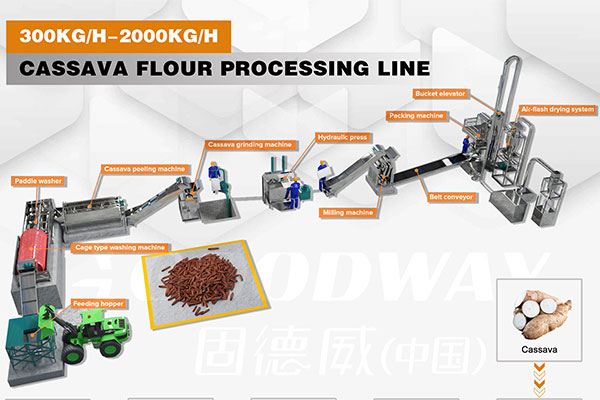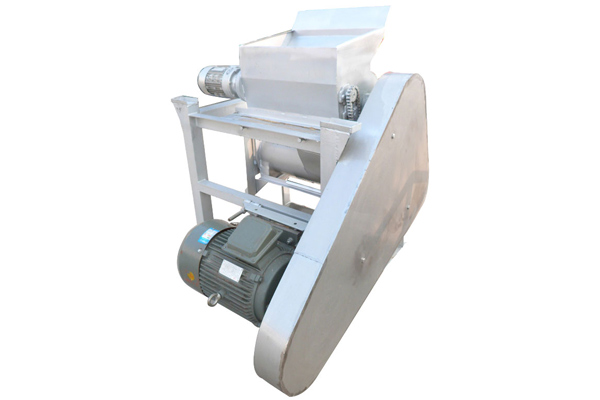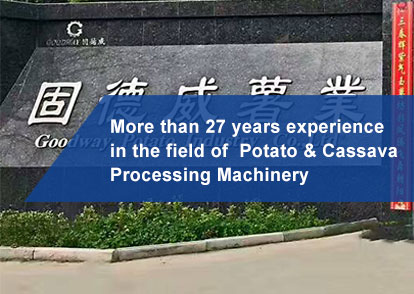Sweet potatoes are seasonally processed and generally excavated before and after frost, and the processing season can last for 30-45 days. The reason is that fresh potatoes used for beating can not be stored for too long, and the sweet potato starch saccharification extraction rate is too long. Secondly, the sweet potato skin softens and is not easy to be crushed.
Sweet potato starch production process: raw sweet potato→hydraulic transport→cleaning stone→drum cleaning→crushing→separation→sand removal→concentrated desiccant cyclone separation→purification and purification→vacuum dehydration→air flow Drying→packaging the finished product
1.The basic principle of cleaning: mainly to remove the sediment from the outer skin layer of sweet potato, and wash away the epidermis of the root of sweet potato. Cleaning the fresh sweet potato or sweet potato chips as raw materials for the production of starch is the basis for ensuring the quality of starch. The cleaner the cleaning, the better the quality of the starch.
2.The basic principle of disintegration: Sweet potato starch is mainly stored in the fleshy part of the root, and only a small amount is stored in the endothelium. The purpose of the disintegration is to destroy the structure of the sweet potato, so that the tiny starch granules can be smoothly separated from the roots. The starch released from the cells is called free starch. Residual in the cells inside the dregs is called bound starch. Crushing is one of the most important processes in the processing of fresh potatoes. It is related to the flour yield of fresh potatoes and the quality of starch.
3.The basic principle of sieving: sweet potato slag is a slender fiber with a larger volume than starch granules. The coefficient of expansion is also greater than that of starch granules, which are lighter than starch granules. The pulverized puree is further filtered out with water as a medium to further melt the starch slurry contained in the potato dregs.
4.The basic principle of purification and sedimentation: the specific gravity of mud and sand is greater than that of water and greater than the specific gravity of starch granules. According to the principle of gravity separation, the use of cyclone sand removal, or the use of the trough sedimentation method, can achieve better results. The specific gravity of the yellow pulp is close to that of water, and it is lighter than the specific gravity of starch granules. Its shape is palm shape. The longer the processing cycle, the greater the glue performance. Sticky screen sticks to starch granules and is extremely difficult to separate. Therefore, the raw materials are required to be fresh, the process is short, and the separation is timely.
5.The basic principle of dehydration: the concentrated starch slurry still contains more water, and further dehydration can be dried.
6.The basic principle of drying: At present, the starch plant generally uses air drying (also called rapid drying). The entire process time is completed in an instant. Therefore, the internal moisture of the starch granules has not been gelatinized and dried, so gelatinization or degradation does not occur. Airflow drying is a cocurrent drying process, that is, the cocurrent process of the wet powder material and the hot gas flow, which consists of two processes of heat transfer and mass transfer. When the wet starch is in contact with hot air, the hot air transfers the thermal energy to the surface of the wet starch, which is then transferred from the surface to the interior. This process is the heat transfer process. At the same time, the moisture in the wet starch diffuses from the inside of the material to the surface of the starch in a liquid or gaseous state, and the surface of the starch diffuses through the gas film into the hot air, which is a mass transfer process. That is, the high-temperature airflow and the wet starch are uniformly exchanged in the drying tube to make the dried starch powdery, and after cooling, it can be packed into the storage.

 EN
EN
 fr
fr  es
es  it
it  pt
pt 







